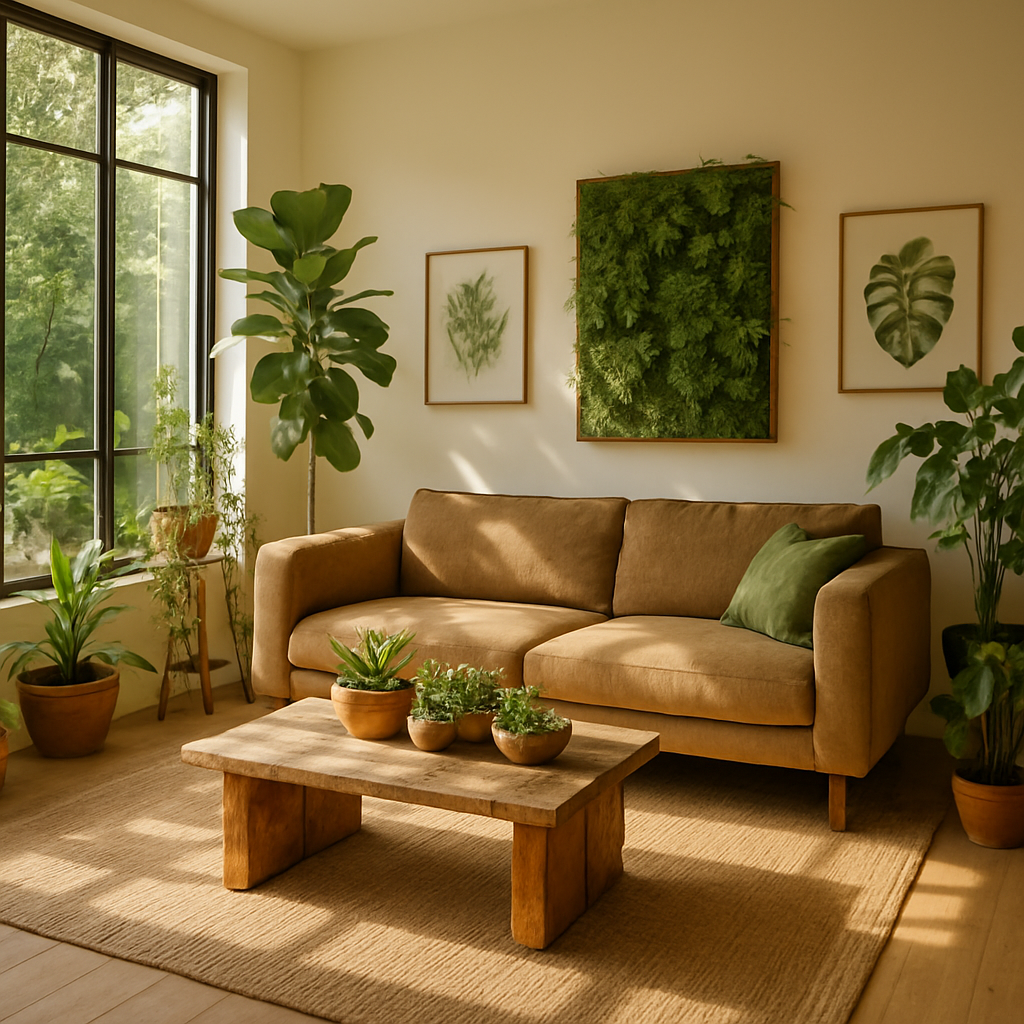Biophilic Design Creating Nature Inspired Spaces Indoors

Biophilic design, the art of creating nature-inspired indoor spaces, has been gaining traction in the world of home decor. It’s not surprising, considering how much time we spend indoors, often in spaces that feel a bit too sterile or disconnected from nature. Imagine an indoor jungle where the air is fresh, the colors are warm, and everything feels alive. This isn’t just a dream for plant lovers; it’s a movement that’s changing how we think about our living spaces.
The idea behind biophilic design is simple: humans are inherently drawn to nature. This connection is hardwired into us, so it makes sense that our environment should reflect that. It’s not just about throwing a few plants around (though that’s a good start); it’s about integrating natural elements like light, air, and earthy textures into the very fabric of our homes. The payoff? Spaces that feel more comfortable, reduce stress, and might even boost productivity because who doesn’t want to feel like they’re working in a forest?
The Roots of Biophilic Design
Biophilia, a term coined by psychoanalyst Erich Fromm and later popularized by biologist Edward O. Wilson, refers to the innate human affinity for nature. It suggests that our connection to the natural world is deeply embedded in our biology. Wilson’s book, “Biophilia,” posits that interacting with nature is crucial for human well-being. This might explain why we feel so refreshed after a walk in the park or sitting by a window with a view.
Back in the day, our ancestors lived in environments where nature was all around them. Fast forward to the industrial age, and suddenly we found ourselves in concrete jungles. It’s like the pendulum swung too far the other way. Biophilic design is a way to bring things back into balance, giving us the best of both worlds: modern living with a natural twist.
Bringing the Outdoors In
Creating a biophilic space isn’t as daunting as it sounds. Start with simple touches: a few potted plants, natural wood finishes, or a water feature. The idea is to create a multi-sensory experience that mimics being outdoors. Let’s talk about some elements that can help achieve this.
Plants: The most straightforward way to bring nature indoors is with plants. They’re not just pretty to look at; they purify the air and can even improve your mood. A study by NASA, “Interior Landscape Plants for Indoor Air Pollution Abatement,” highlighted how certain houseplants can remove toxins from the air. Think about adding different varieties ferns, succulents, or even a bold fiddle-leaf fig to create layers and texture.
Natural Light: Sunlight is a powerful mood booster. If your home is lacking in natural light, try using mirrors to reflect light or opt for light fixtures that mimic natural daylight. You might find that your space feels larger and more inviting with just a few tweaks.
Textures and Materials: Incorporating natural materials like wood, stone, or wool can add warmth and texture to a room. These materials have a tactile quality that synthetic materials often lack. I once swapped out a glass coffee table for a reclaimed wood one (I found a beauty at a local flea market), and the whole room just felt more grounded.
Water Features: The sound of running water has a calming effect. Whether it’s a small tabletop fountain or a more elaborate installation, this element can add an auditory dimension to your biophilic space. I’ll admit, I was skeptical about how much a tiny fountain could add, but after setting one up in my living room, I found myself gravitating to that space more and more.
Unconventional Twists
While plants and natural materials are the bread and butter of biophilic design, it doesn’t hurt to think outside the box a bit. Consider incorporating elements like living walls vertical gardens that can be both a statement piece and a practical way to improve air quality. Or how about biophilic art? Pieces that incorporate natural scenes or materials can be a subtle yet effective nod to nature.
Here’s a surprising thought: biophilic design can also mean embracing imperfections. Nature isn’t perfect trees have gnarled branches, stones have rough edges, and that’s part of their beauty. This concept is captured in the Japanese philosophy of wabi-sabi, which finds beauty in imperfection. Maybe it’s just me, but there’s something freeing about not having everything perfectly polished.
The Science Bit
Biophilic design isn’t just about aesthetics there’s some solid science backing its benefits. Studies have shown that environments incorporating natural elements can reduce stress, enhance cognitive function, and improve overall well-being. According to a study by the International Journal of Environmental Research and Public Health, exposure to natural environments can lead to increases in mood and cognitive function. That’s right, your indoor jungle might just make you a happier, smarter person.
But here’s where I find myself scratching my head a bit. While the benefits are clear, implementing biophilic design in urban settings can be tricky. High-rise apartments with limited light or space don’t exactly scream “nature haven.” Yet, this challenge has sparked some creative solutions, like using grow lights for indoor plants or utilizing balconies for mini-gardens.
Real-Life Experiences
A friend of mine, Sarah, transformed her city apartment into a veritable oasis. She started with a few pothos and gradually built a collection that now includes an impressive array of ferns, succulents, and even a small banana plant. I remember visiting her place last spring and being struck by how different it felt from the bustling city outside. There was an undeniable sense of calm, and honestly, it made me a bit jealous.
On a personal note, my own experiments with biophilic design have been a mixed bag. I’ve had triumphs like successfully keeping a monstera alive (and thriving!) but I’ve also faced setbacks. My attempt at creating a small herb garden in the kitchen window was thwarted by a particularly gloomy winter. But hey, failure is part of the journey, right? At least I got some good pesto out of it before the plants gave up.
Embracing the Imperfect
Biophilic design isn’t a one-size-fits-all approach. It’s about finding what works for you and your space. Maybe you’re not ready for a full-scale indoor forest, and that’s okay. Even small changes, like adding a few potted plants or a nature-inspired piece of art, can make a difference.
This brings me to an unconventional observation: sometimes, embracing the imperfect can lead to the most satisfying results. I used to think every plant in my home had to be picture-perfect, but now I’m not so sure. The plants with a few crispy leaves or a slightly uneven growth pattern have their own charm. They’re a reminder that nature and life, for that matter isn’t always about perfection.
In the quest for creating nature-inspired spaces, it’s easy to get caught up in the aesthetics and forget the ultimate goal: a space that feels good to be in. Whether you’re a seasoned plant parent or just dipping your toes into the world of biophilic design, the key is to create a space that feels right for you. So go ahead, bring a little bit of the outside in, and see how it changes your space and maybe even your outlook.


